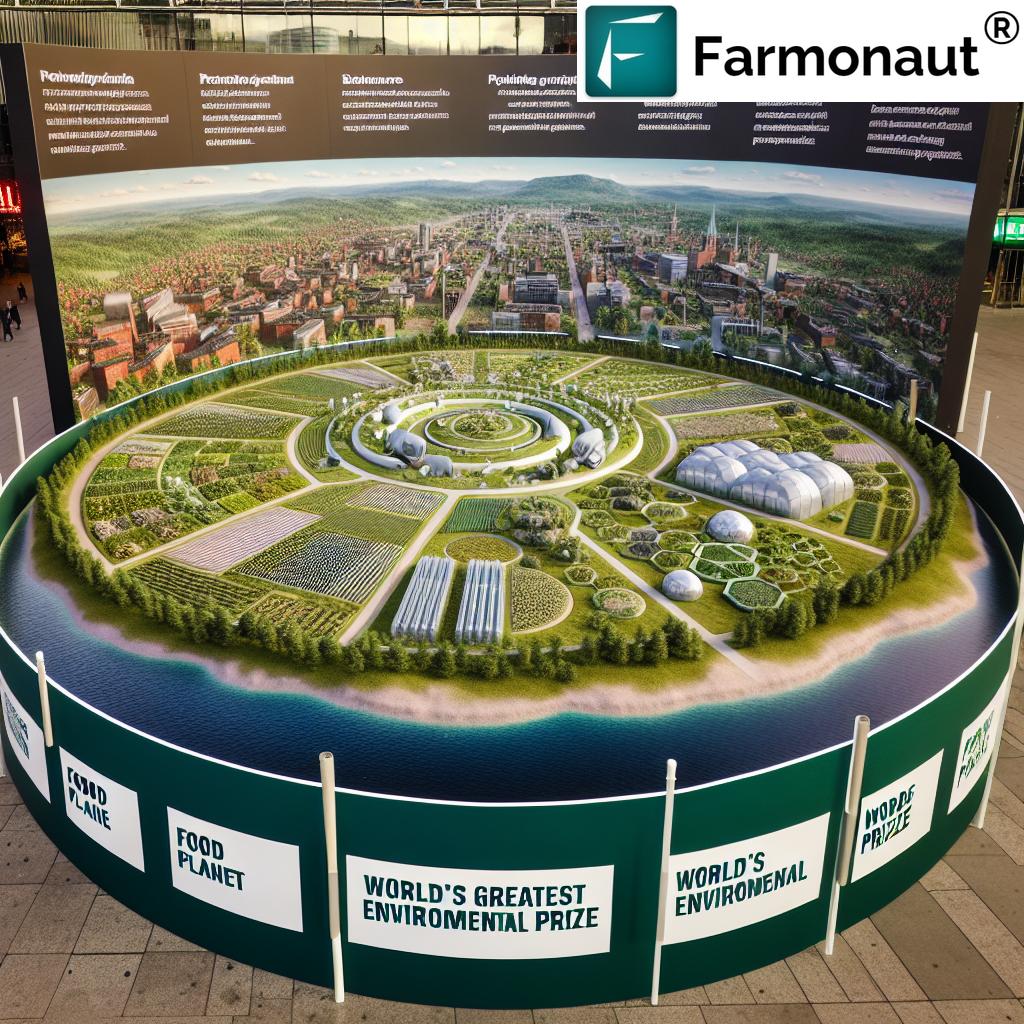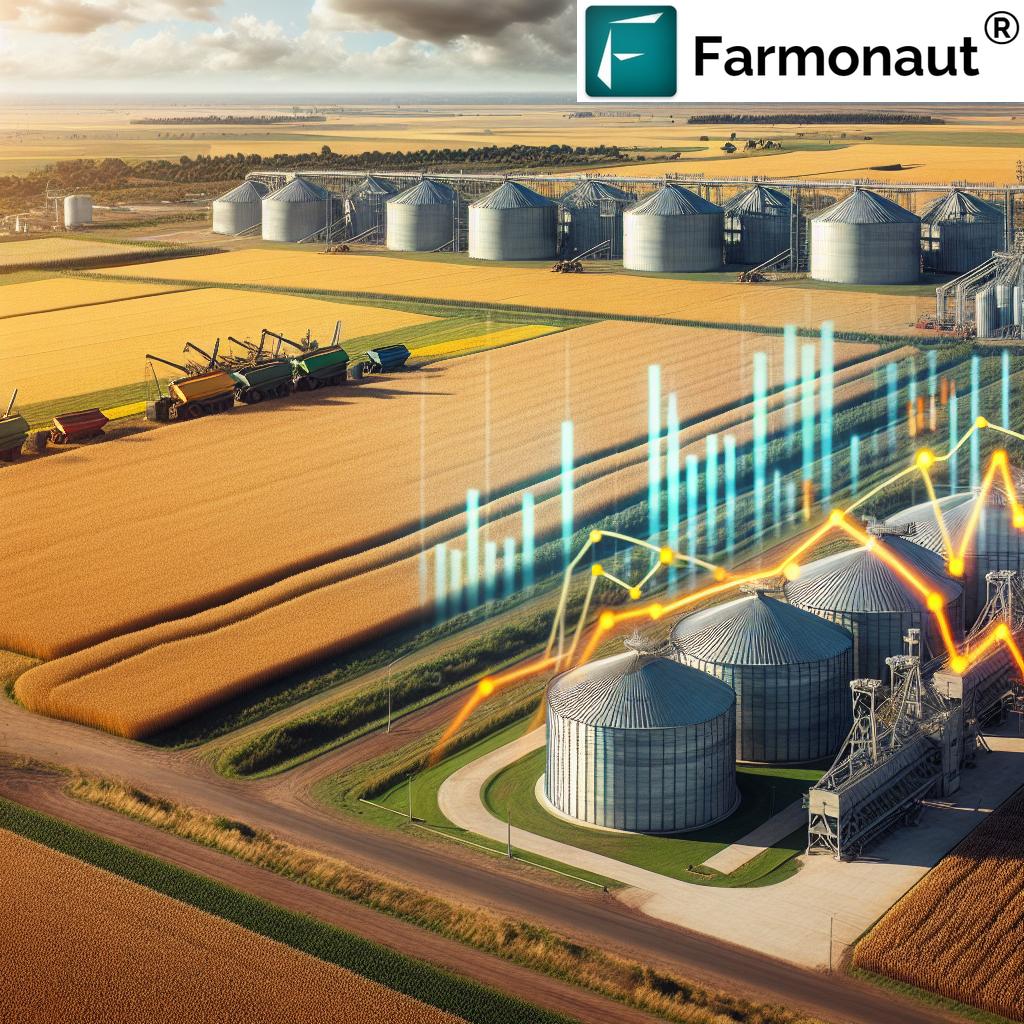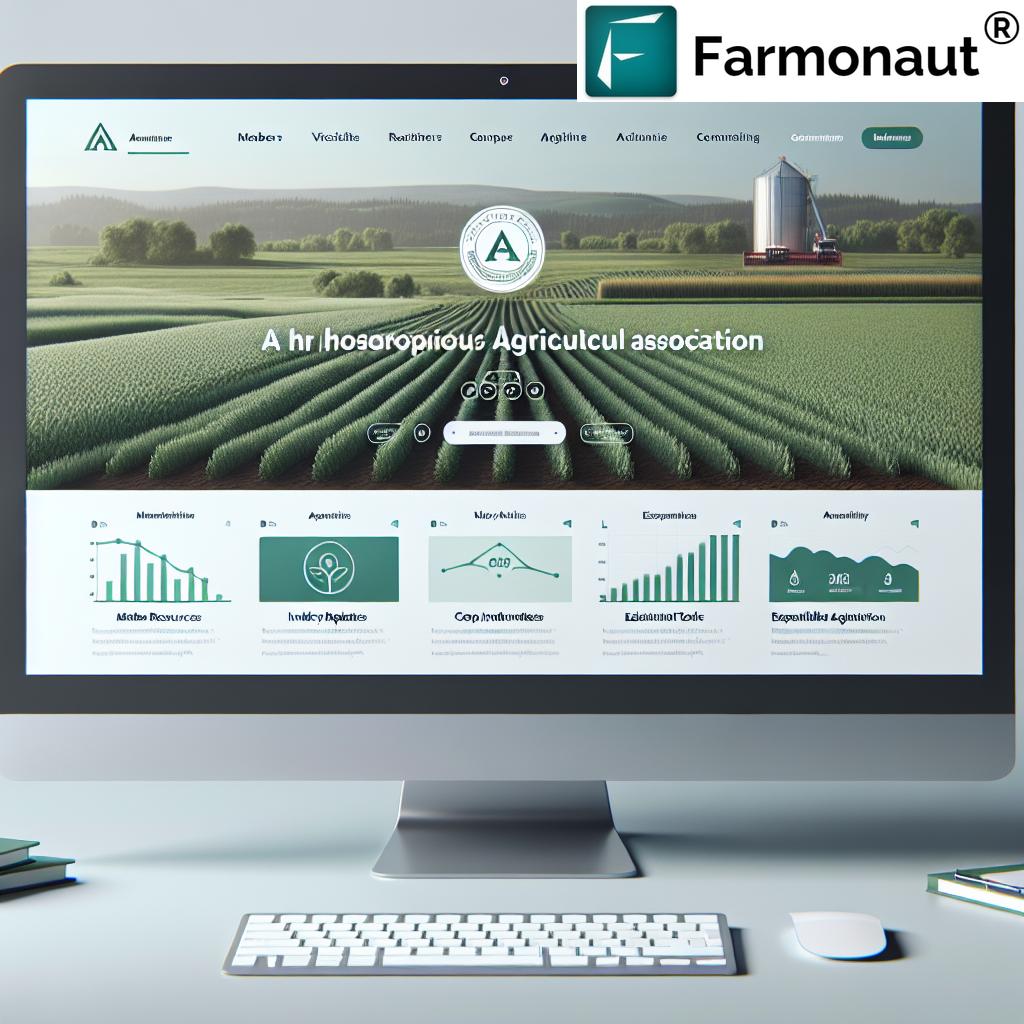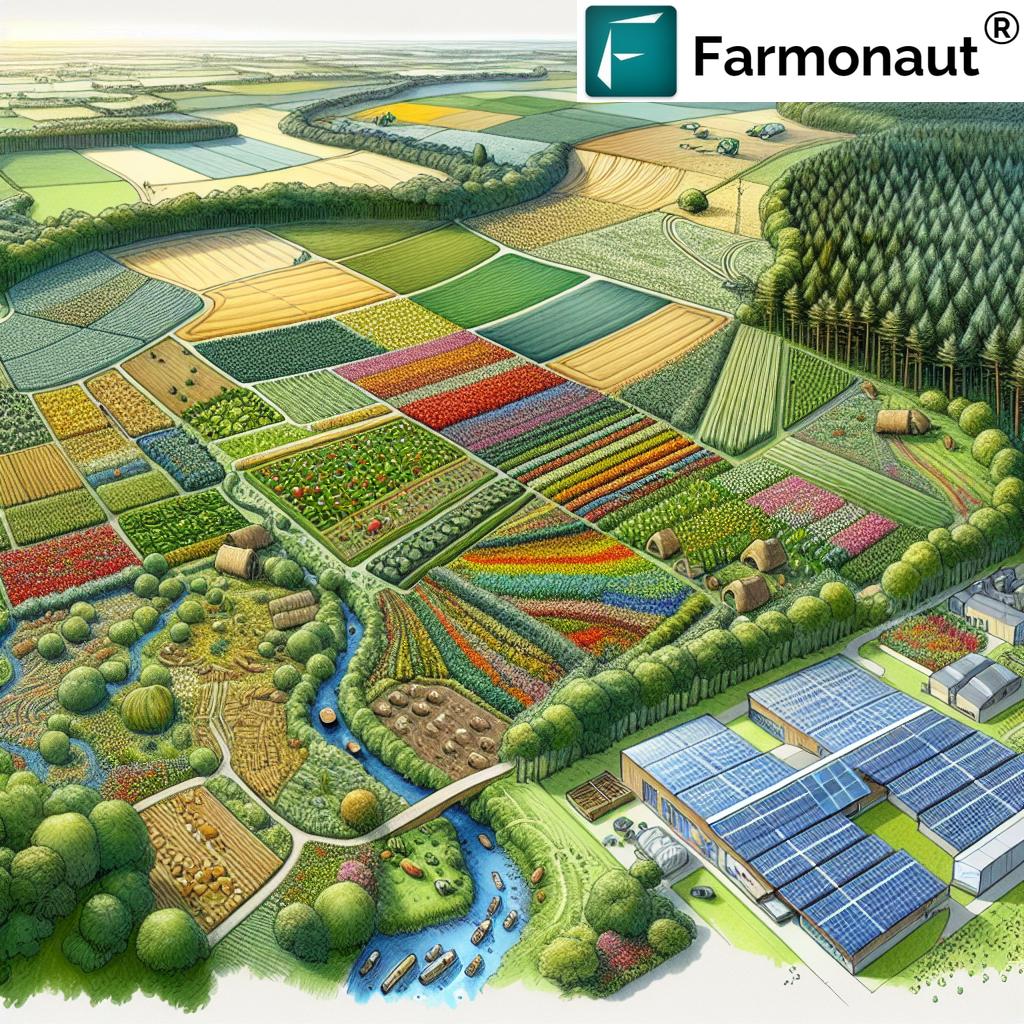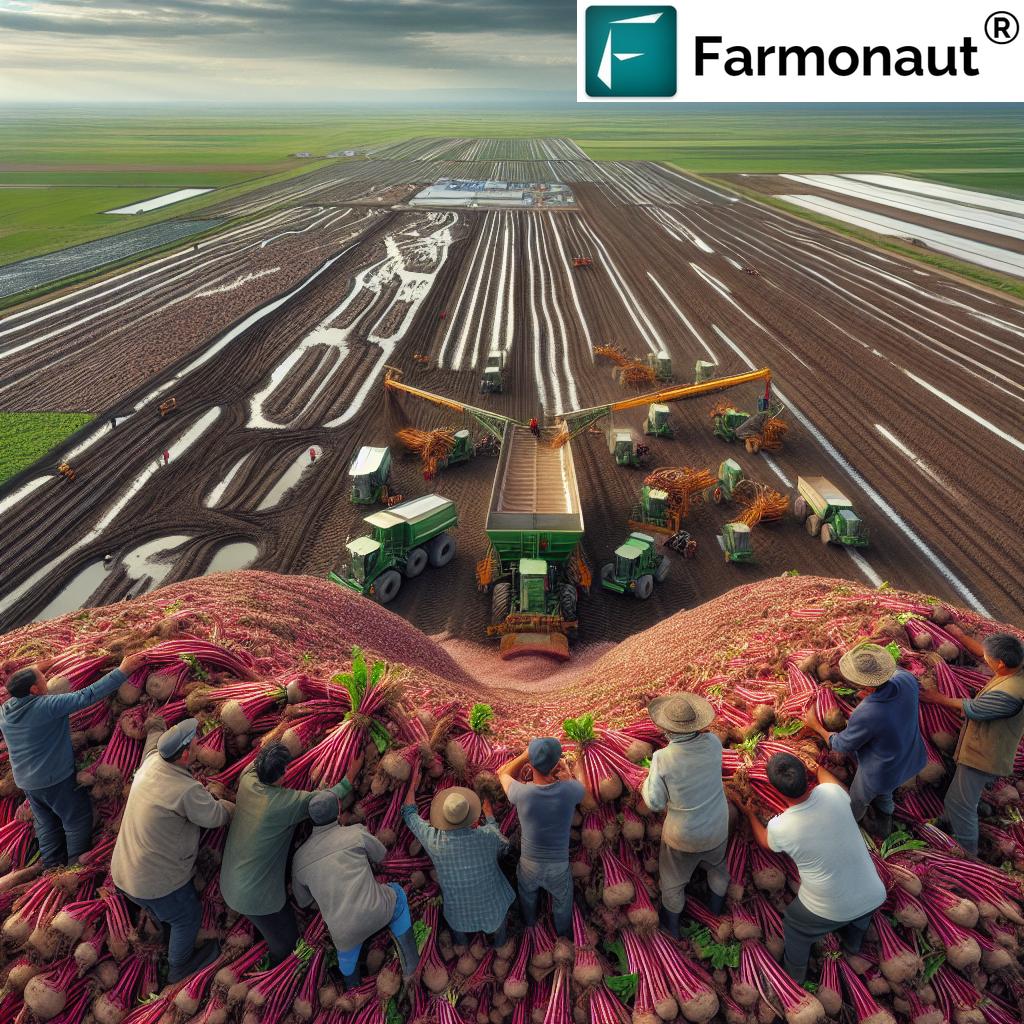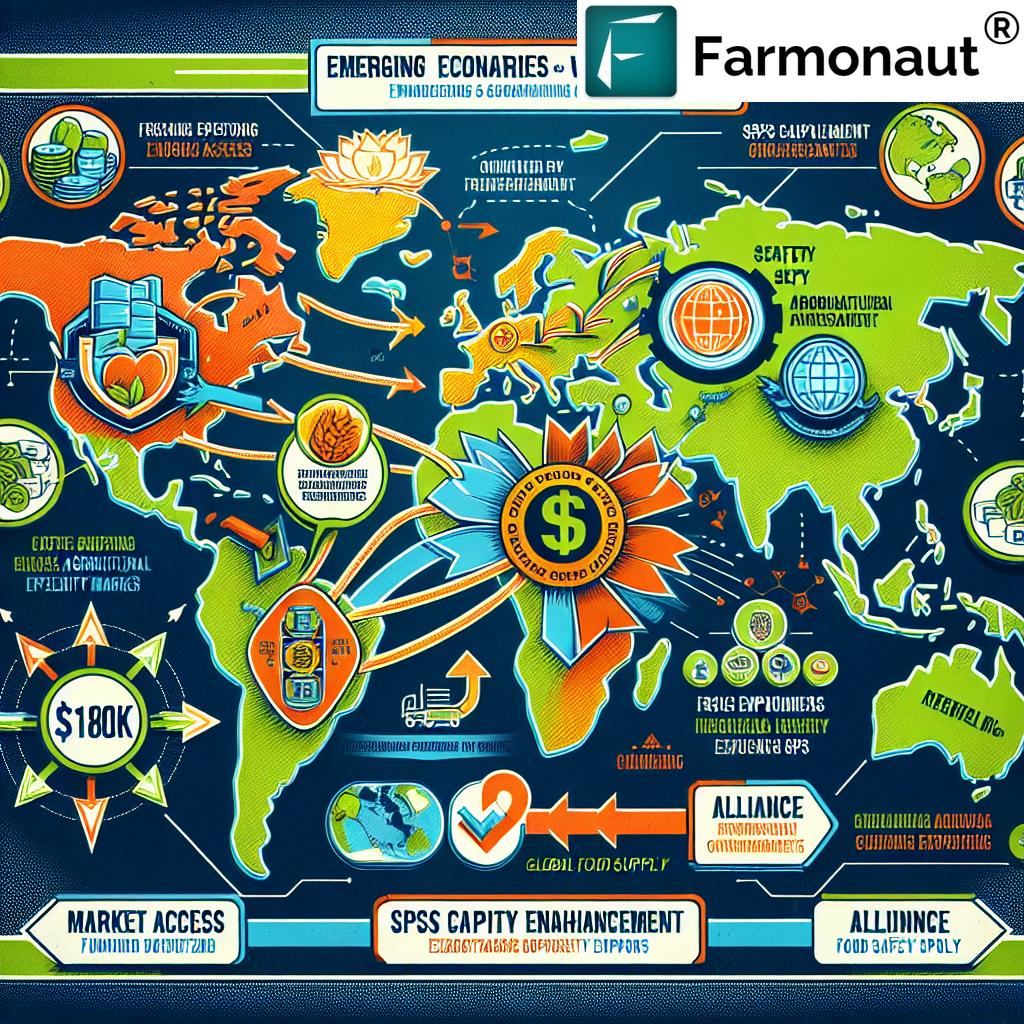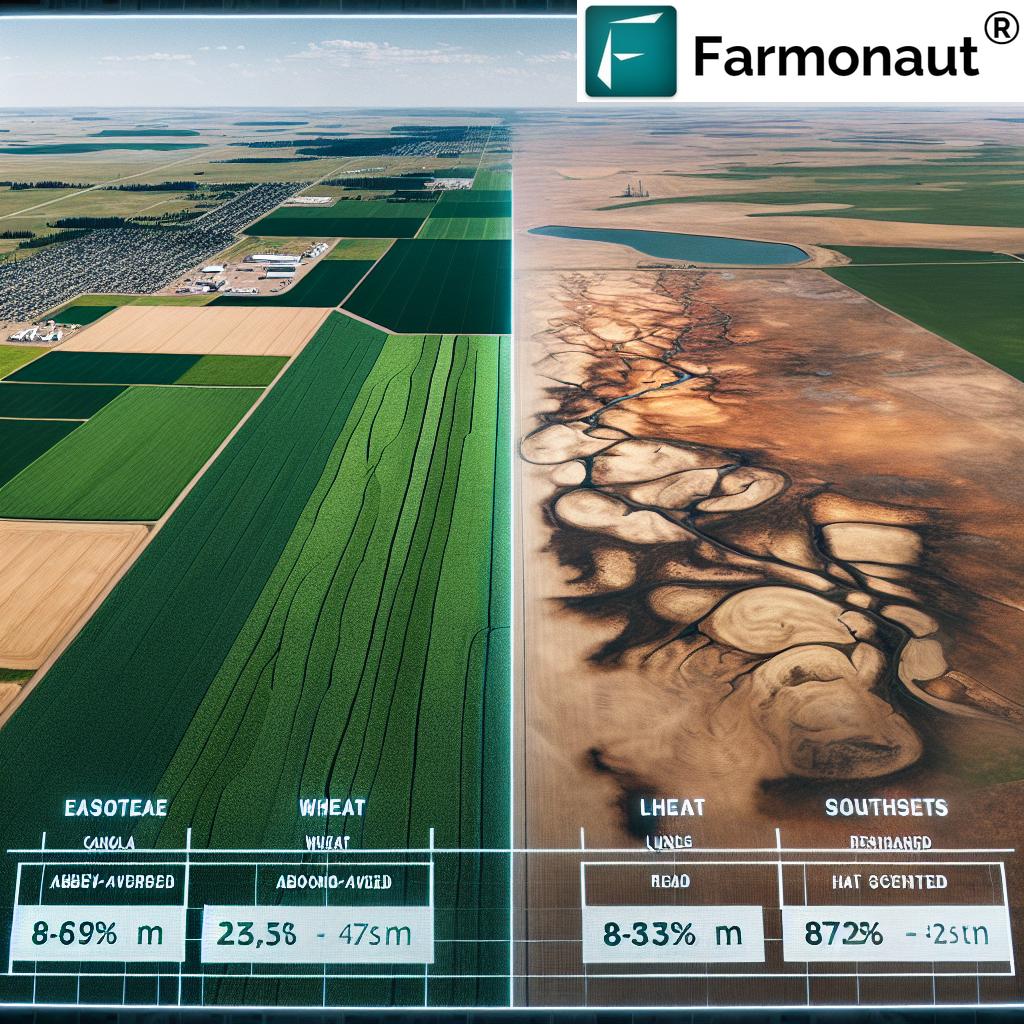Global Timber Market Soars: 7% Rise in Softwood Lumber Trade Signals Industry Growth
“Global softwood lumber trade surged 7% in the first half of 2014, signaling robust growth in the timber industry.”
Welcome to our comprehensive analysis of the booming global timber market. At Farmonaut, we’re excited to share our insights on the remarkable 7% increase in softwood lumber trade during the first half of 2014. This significant growth not only reflects the resilience of the forestry industry but also highlights the increasing global demand for wood products, particularly in construction.
As pioneers in agricultural technology, we at Farmonaut understand the importance of staying informed about market trends that impact land use, farm diversification, and rural economies. While our primary focus is on precision agriculture through satellite-based farm management solutions, we recognize the interconnectedness of various agricultural sectors, including forestry.
The Surge in Global Timber Trade
The 7% rise in softwood lumber trade is a clear indicator of the forestry industry’s robust performance. This growth is primarily driven by countries like Russia, Germany, and Sweden, which have seen a substantial increase in their timber exports. Let’s delve deeper into what this means for the global market and the implications for various stakeholders in the industry.
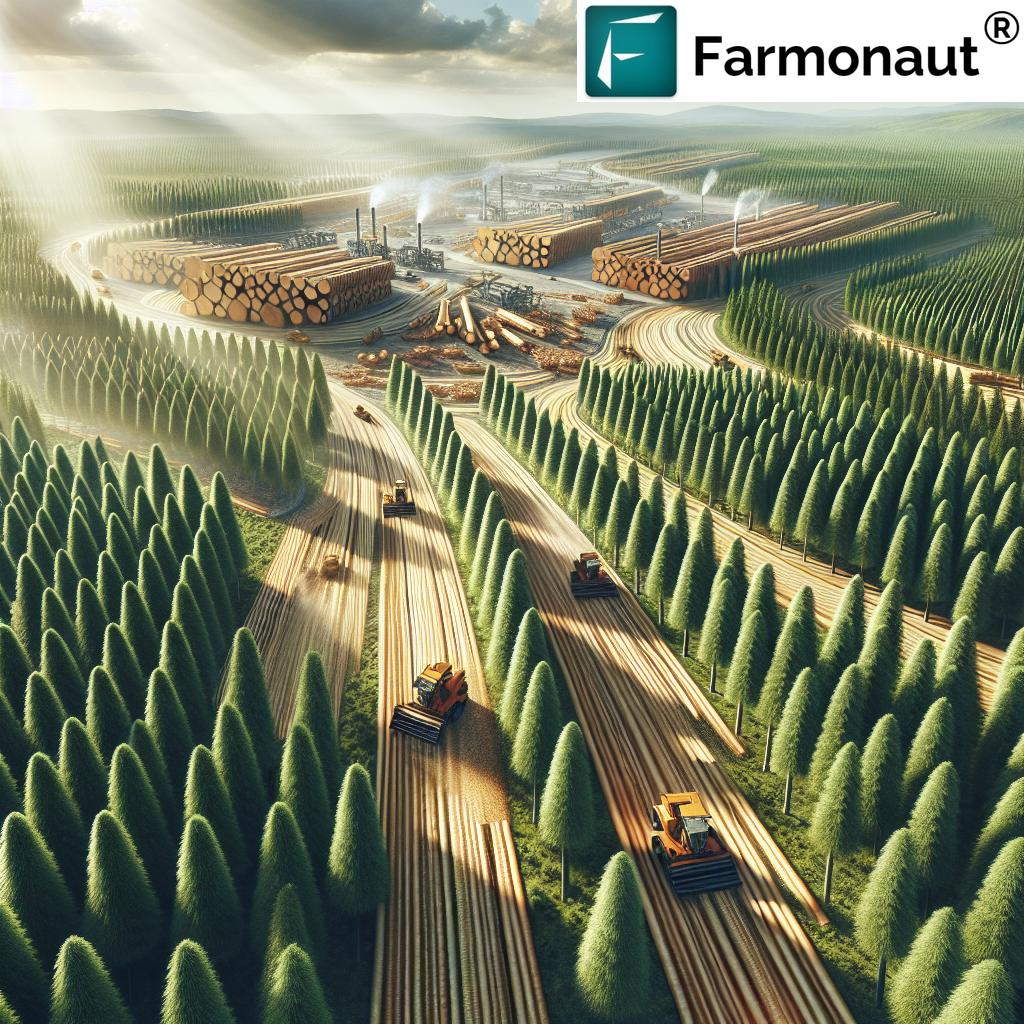
Key Drivers of Growth
- Rising Global Construction Demand: The increased need for wood products in construction projects worldwide has been a significant factor in driving up timber exports.
- Sustainable Forestry Practices: Countries implementing efficient and sustainable forest management strategies have been able to meet the growing demand while ensuring long-term resource availability.
- Economic Recovery: As global economies continue to recover from recent challenges, the demand for timber in various industries has seen a notable uptick.
At Farmonaut, while we specialize in satellite-based crop monitoring and AI-driven advisory systems for agriculture, we recognize the importance of understanding broader market trends that affect land use and rural economies. Our technologies, though not directly related to forestry, can provide valuable insights into land management practices that may indirectly impact timber production.
For those interested in exploring how our satellite technology can benefit various aspects of land management, including potential applications in forestry, we invite you to check out our services:

Leading Countries in Timber Exports
The growth in softwood lumber trade has been particularly notable in several key countries:
| Country | Estimated Export Volume (million cubic meters) | Estimated Growth Rate (%) | Primary Export Markets |
|---|---|---|---|
| Russia | 11.2 | 9 | China, Japan, Europe |
| Germany | 8.7 | 6 | European Union, China, USA |
| Sweden | 7.5 | 8 | United Kingdom, Norway, Denmark |
| Canada | 15.3 | 5 | USA, China, Japan |
This table illustrates the significant contributions of these countries to the global timber market. Russia, in particular, has shown impressive growth, capitalizing on its vast forest resources and strategic location for exports to Asia and Europe.
Implications for Global Farms and Land Use
The growth in timber trade has several implications for global farms and land use:
- Diversification Opportunities: Farmers with suitable land may consider incorporating timber production as a long-term investment and diversification strategy.
- Land Value Changes: Increased demand for timber may affect land values in areas suitable for forestry.
- Environmental Considerations: The balance between timber production and sustainable land management becomes crucial.
At Farmonaut, we understand the importance of making informed decisions about land use. While our primary focus is on crop monitoring and management, our satellite-based technologies can also provide valuable insights for land assessment and planning, which could be beneficial for those considering timber production as part of their agricultural portfolio.
Explore our API for custom applications: Farmonaut API
For developers interested in integrating our satellite data: API Developer Docs
Sustainable Timber Production Practices
As the demand for timber grows, sustainable production practices become increasingly important. Here are some key strategies being implemented globally:
- Selective Harvesting: This method involves carefully choosing which trees to harvest, maintaining forest health and biodiversity.
- Reforestation Programs: Many countries are implementing robust reforestation initiatives to ensure long-term timber supply.
- Certification Systems: Programs like FSC (Forest Stewardship Council) certification promote responsible forest management.
- Advanced Monitoring Technologies: Satellite imaging and AI are being used to monitor forest health and manage resources more effectively.
While Farmonaut’s technology is primarily focused on crop monitoring, the principles of satellite-based observation and data analysis can be applied to forestry management as well. Our expertise in remote sensing and AI could potentially contribute to more efficient and sustainable timber production practices in the future.

The Role of Technology in Forestry Management
Technology plays a crucial role in modern forestry management. While Farmonaut’s primary focus is on crop management, the principles of our technology can be applied to forestry as well. Here’s how advanced technologies are shaping the timber industry:
- Satellite Imaging: Used for monitoring forest cover, assessing tree health, and planning harvests.
- Artificial Intelligence: AI algorithms can analyze satellite data to predict growth rates, identify diseases, and optimize forest management strategies.
- Drone Technology: Drones are increasingly used for detailed forest surveys and monitoring hard-to-reach areas.
- GIS Mapping: Geographic Information Systems help in precise planning and management of forest resources.
At Farmonaut, we’re at the forefront of applying these technologies in agriculture. While our current focus is not on forestry, the potential applications of our technology in this field are significant. Our satellite-based monitoring and AI-driven analytics could potentially be adapted for forest management in the future.
“Russia, Germany, and Sweden led the increase in global timber exports, reflecting rising construction demand worldwide.”
Impact on Rural Economies and Livelihoods
The growth in the timber industry has significant implications for rural economies and livelihoods:
- Job Creation: Increased timber production leads to more employment opportunities in rural areas.
- Economic Diversification: Timber production offers an alternative income source for rural communities.
- Infrastructure Development: The timber industry often leads to improved rural infrastructure to support logging and transportation.
- Skill Development: The industry promotes the development of specialized skills in forestry management and wood processing.
While Farmonaut’s primary focus is on empowering farmers through precision agriculture, we recognize the broader impact of industries like forestry on rural development. Our technology, though not directly applied to forestry, contributes to the overall advancement of rural economies by enhancing agricultural productivity.
Explore our mobile apps for on-the-go farm management:


Environmental Considerations in Timber Production
As the timber industry grows, it’s crucial to address environmental concerns:
- Biodiversity Conservation: Sustainable forestry practices must prioritize maintaining biodiversity in managed forests.
- Carbon Sequestration: Well-managed forests play a vital role in carbon capture and storage.
- Water Resource Management: Proper forestry practices are essential for maintaining healthy watersheds.
- Soil Conservation: Sustainable logging methods help prevent soil erosion and maintain soil health.
At Farmonaut, we understand the importance of environmental stewardship in agriculture. While our technology is primarily used for crop management, the principles of sustainable resource use and environmental monitoring are applicable across various land-based industries, including forestry.
The Future of the Global Timber Market
Looking ahead, several trends are likely to shape the future of the global timber market:
- Increased Demand for Sustainable Products: Consumers are increasingly favoring wood products from sustainably managed forests.
- Technological Advancements: Continued integration of AI, satellite technology, and big data in forest management.
- Climate Change Adaptation: The industry will need to adapt to changing climate conditions affecting forest growth patterns.
- Diversification of Wood Products: Emerging markets for engineered wood products and biofuels from timber resources.
While Farmonaut’s primary focus remains on agricultural technology, we’re keenly aware of these broader trends in land-based industries. Our commitment to innovation in agricultural technology aligns with the evolving needs of various sectors that rely on land management and resource optimization.
Challenges Facing the Timber Industry
Despite the positive growth, the timber industry faces several challenges:
- Regulatory Compliance: Navigating complex and often changing environmental regulations.
- Market Volatility: Fluctuations in demand and prices can impact industry stability.
- Competition from Alternative Materials: Increasing use of steel, concrete, and engineered materials in construction.
- Labor Shortages: Many regions are experiencing shortages of skilled forestry workers.
At Farmonaut, we understand the importance of addressing industry challenges through innovation. While our focus is on agricultural technology, many of the solutions we develop for agriculture, such as efficient resource management and data-driven decision-making, can be applicable to forestry as well.
The Role of Government Policies in Timber Industry Growth
Government policies play a crucial role in shaping the timber industry:
- Trade Agreements: International trade policies significantly impact timber export opportunities.
- Environmental Regulations: Policies on forest management and conservation affect timber production practices.
- Incentives for Sustainable Practices: Many governments offer incentives for adopting sustainable forestry methods.
- Research and Development Support: Government funding for forestry research drives innovation in the industry.
While Farmonaut’s primary focus is on agricultural technology, we recognize the importance of staying informed about policies that affect land use and resource management across various sectors. Our commitment to providing data-driven insights in agriculture aligns with the broader goal of informed decision-making in land-based industries.
Innovations in Wood Products and Their Impact on Demand
Innovations in wood products are driving new demand in the timber industry:
- Cross-Laminated Timber (CLT): Gaining popularity in construction for its strength and environmental benefits.
- Wood-Based Biofuels: Emerging as a renewable energy source, creating new markets for timber products.
- Nanocellulose: Advanced wood-derived material with applications in various industries.
- 3D-Printed Wood Products: Opening new possibilities in custom wood manufacturing.
At Farmonaut, we’re excited about innovations that drive sustainability and efficiency across agricultural and forestry sectors. While our technology focuses on crop management, we appreciate the parallels in innovation between agriculture and forestry, particularly in terms of sustainable resource use and advanced material development.
The Intersection of Agriculture and Forestry
The growth in the timber industry has interesting implications for agriculture:
- Agroforestry Practices: Integrating trees into agricultural landscapes for mutual benefits.
- Land Use Competition: Balancing the demand for agricultural land with forestry needs.
- Diversification Strategies: Farmers considering timber as a long-term investment crop.
- Ecosystem Services: Recognizing the role of forests in supporting agricultural productivity.
At Farmonaut, while our primary focus is on precision agriculture, we recognize the interconnectedness of various land-based industries. Our satellite-based monitoring and AI-driven analytics, though currently tailored for crop management, have potential applications in integrated land use strategies that combine agriculture and forestry.
Conclusion: A Thriving Global Timber Market
The 7% rise in softwood lumber trade signals a robust and growing global timber market. This growth, driven by countries like Russia, Germany, and Sweden, reflects not only the increasing demand for wood products in construction but also the industry’s ability to adapt to changing market conditions and environmental concerns.
As we at Farmonaut continue to innovate in agricultural technology, we recognize the parallels and intersections between agriculture and forestry. Both industries face similar challenges in terms of sustainability, resource management, and the need for technological innovation. While our focus remains on empowering farmers through precision agriculture, we’re excited about the potential for our technologies to contribute to broader land management strategies in the future.
The timber industry’s growth presents opportunities for rural development, sustainable resource management, and technological innovation. As the industry evolves, it will be crucial to balance economic growth with environmental stewardship, ensuring that the global timber market continues to thrive sustainably.
For those interested in exploring how technology can drive efficiency and sustainability in land-based industries, we invite you to learn more about Farmonaut’s innovative solutions in precision agriculture:
FAQ Section
- Q: What is driving the growth in the global timber market?
A: The growth is primarily driven by increased global construction demand, sustainable forestry practices, and economic recovery in key markets. - Q: Which countries are leading the increase in timber exports?
A: Russia, Germany, and Sweden are among the leading countries contributing to the growth in timber exports. - Q: How does the timber industry impact rural economies?
A: The timber industry creates jobs, promotes economic diversification, drives infrastructure development, and encourages skill development in rural areas. - Q: What are some sustainable timber production practices?
A: Sustainable practices include selective harvesting, reforestation programs, certification systems like FSC, and the use of advanced monitoring technologies. - Q: How is technology changing the timber industry?
A: Technology is revolutionizing the industry through satellite imaging, artificial intelligence, drone technology, and GIS mapping for more efficient and sustainable forest management. - Q: What are the main environmental considerations in timber production?
A: Key environmental considerations include biodiversity conservation, carbon sequestration, water resource management, and soil conservation. - Q: What future trends are expected in the global timber market?
A: Future trends include increased demand for sustainable products, technological advancements in forest management, climate change adaptation, and diversification of wood products. - Q: How do government policies affect the timber industry?
A: Government policies impact the industry through trade agreements, environmental regulations, incentives for sustainable practices, and support for research and development. - Q: What innovations are driving new demand in the timber industry?
A: Innovations like Cross-Laminated Timber (CLT), wood-based biofuels, nanocellulose, and 3D-printed wood products are creating new markets and applications for timber. - Q: How does the growth in the timber industry relate to agriculture?
A: The timber industry intersects with agriculture through agroforestry practices, land use considerations, diversification strategies for farmers, and the recognition of forests’ role in supporting agricultural ecosystems.
As we conclude this comprehensive look at the global timber market, we at Farmonaut remain committed to driving innovation in agricultural technology. While our focus is on precision agriculture, we recognize the interconnectedness of various land-based industries and the potential for technological advancements to benefit multiple sectors. We encourage readers to explore how our satellite-based solutions and AI-driven insights can contribute to more efficient and sustainable land management practices across different agricultural contexts.


